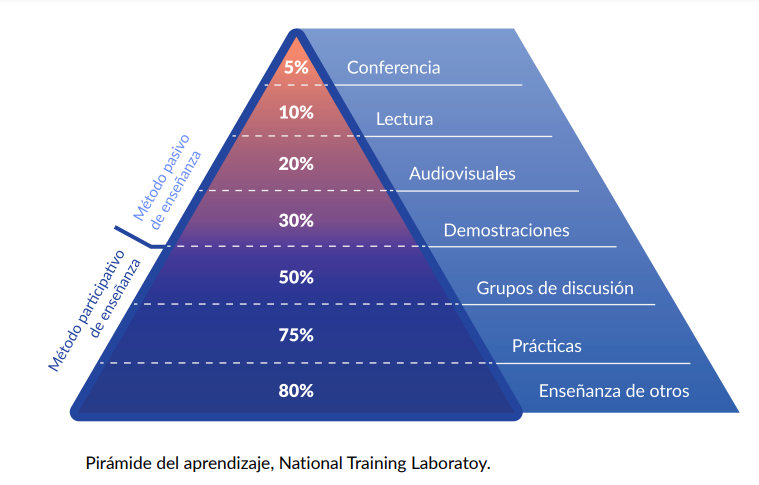Learning by Doing: The methodology of modern learning

It is a fact that between work, housework and life in general, there is very little time left for learning. That is why it is currently necessary to find ways of learning that are meaningful and highly effective. This is the case of learning by doing, a system that, according to what they indicate, has up to 75% of effectiveness and learning retention.
If you are interested in creating training experiences for your collaborators that really have a positive impact on their daily work, this is the way. This is what we investigate regarding this methodology in the following note.
What does “Learning by Doing” mean?
Learning by doing or “Learning By Doing”, It is a learning methodology that focuses on experience. This method postulates that all meaningful teaching must go through action, experimentation and, along with that, trial and error. Have you heard the cliché phrase “you learn from mistakes”? For this case, it couldn't be more true.
This methodology was promoted by John Dewey, an American philosopher who defended the importance of experiences., action and experience as a learning process. Likewise, this model was also supported by other pedagogues, such as William Heard Kilpatrick, David Kolb and Roger Schnak. The latter even explains:
“I have analyzed how learning works, and the basis is to ask, do and fail, ask for help and try again. This is what we call learning by doing.”.
In fact, we are sure that we have all learned by doing, since we were all children at some point. In childhood, experience is one of the pillars of learning, given that "children learn by doing things”, usually by playing and discovering the world. At that stage of life, everything is new, so experimentation is knowledge to internalize.
For this reason, learning by doing is an essential part of the Montessori method. But what does this have to do with adult training? Now we tell you.
Learning by doing as a learning method
As we mentioned, we have all learned by doing at some point. And although it is one of the initial methods of experimentation and education in childhood, it is still one of the most effective ways to learn as an adult.
At least that's what it says Education Corner, who explain the NTL Institute's Learning Pyramid, which ensures that he Learning By Doing It has a 75% for retention of the taught contents.

That is why Training a company's collaborators using this methodology is a great option. Applying learning by doing to training workers will not only make the learning experience more meaningful, but will also allow them to retain the information for longer.
This, in conjunction with a training plan made according to the equipment needs, will ensure that collaborators continue using the tools learned. In this way, they will extend and enhance their learning even more on a daily basis.
Even, sites support Learning By Doing since, in the case of companies, learning by doing “allows develop skills and attitudes highly valued in the current context due to their strategic nature, such as creativity, critical thinking, self-evaluation, analytical skills, teamwork, problem solving and decision making.”
Examples of learning by doing
As we told you, Learning by doing is a more common methodology than you think and you have probably used it more than once.. Next, we tell you what are some examples of Learning by Doing.
Examples in childhood
-
- Riding a bicycle
- Learn to swim
- start writing
- Skate
Examples in working life
-
- Master tools like Excel.
- Operate heavy machinery
- Learn new languages
- University practices.
At Ninja Excel we know the effectiveness of this methodology and we implement it in our Microsoft Excel coursesl. Learning by Doing has elevated the learning experience of employees, since they see the classes, perform practical exercises and receive feedback in real time. Furthermore, our Research Area discovered that the 70% of users who start their courses at the basic level, They achieve 80% proficiency in the tool at the end of their classes.
Vito Hernandez
Graduate in Social Communication and Journalist. Mainly creative before everything. Now writing about Excel and Human Resources for the common man.

